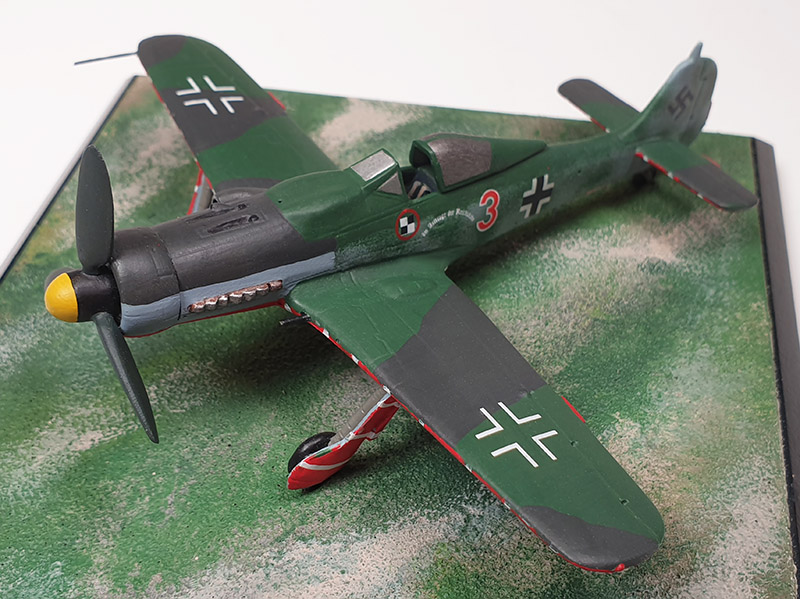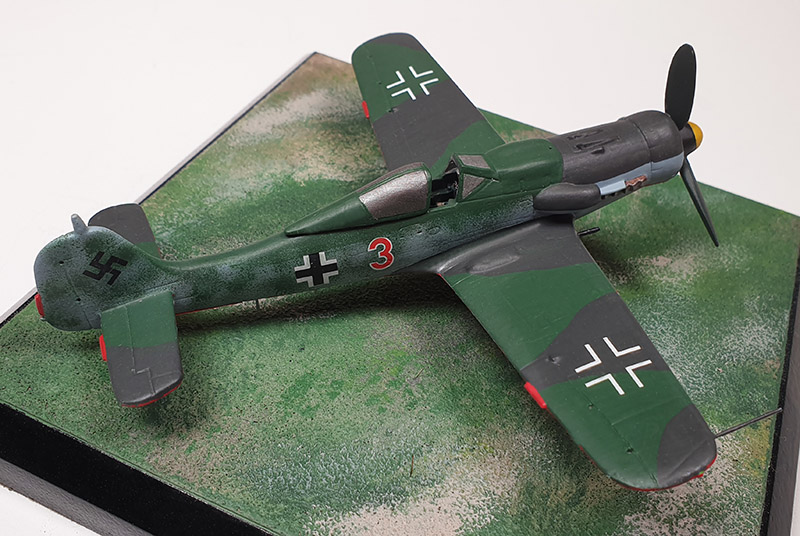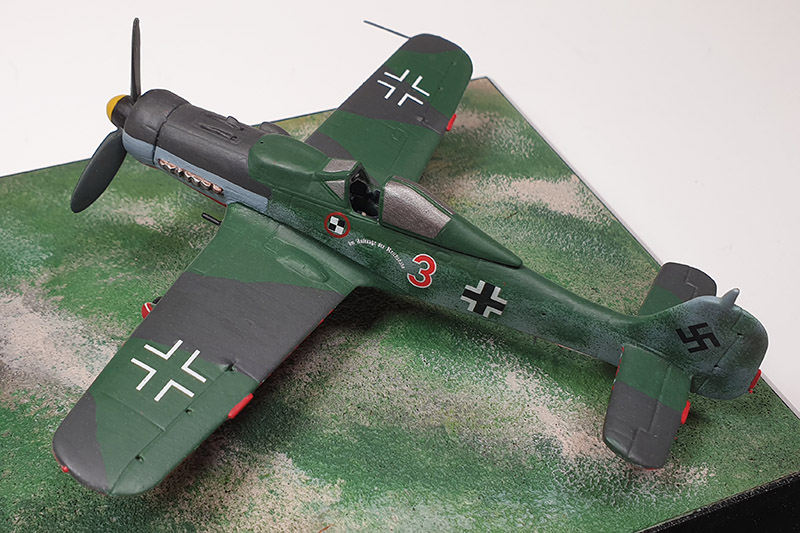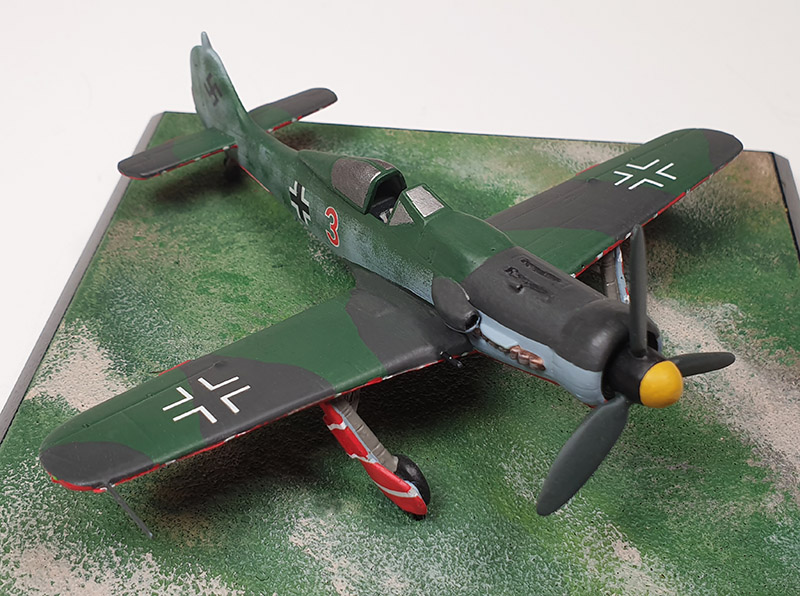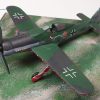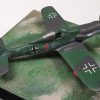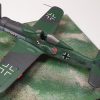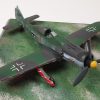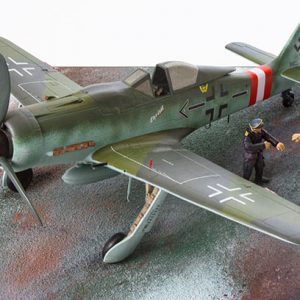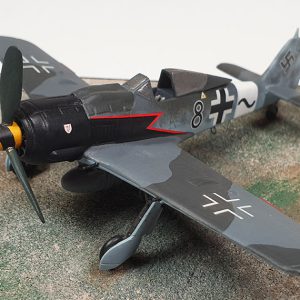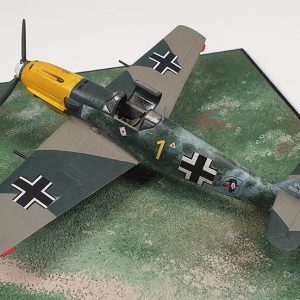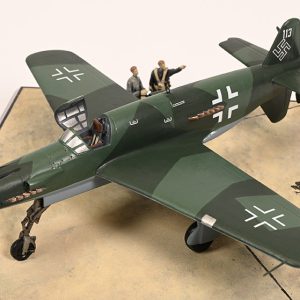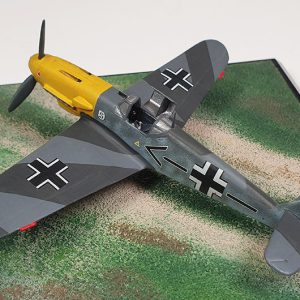Focke Wulf Fw 190D-9 ‘Red 3’ JV44
Hauptman Waldemar Wubke, Ainring, Germany, May 1945.
The Fw 190D-9 was the last variant of Kurt Tank’s Focke-Wulf Fw 190 to see service in considerable number; while it was developed further in to the Ta152 these only saw limited operational service. The BMW 801 radial engine of the Fw 190A was replaced by a liquid-cooled Junkers Jumo 213, with its radiator in an annular cowling retaining a “radial” appearance and the increased length giving rise to the “Langnase-Dora” nickname.
Jagdverband 44 was formed in January 1945 when Adolf Galland, having been replaced as General der Jagdflieger was tasked with setting up a self-contained unit to prove the efficacy of the Messerschmitt Me262 as an interceptor. JV44 was established in February 1945 at Brandenburg-Briest, about thirty miles west of Berlin, which had the advantage of already being the base for the Me 262s of III./JG 7, and here Galland was able to gather many of the Luftwaffe’s most able and experienced fighter pilots. On 31 March the unit relocated to Munich-Riem, for the defence of the aircraft manufacturing and fuel storage facilities in Southern Germany.
Once established there, it became evident that there were problems in operating the Me262 on and around the airfield; its preparation for flight in the open could be time-consuming, it lacked manoeuvring capability, and acceleration, in the take-off and landing phases of the flight and in the latter was usually critical on fuel, all of these making it prey for the USAAF P-51D Mustangsthat were by this time roaming Bavaria. As a counter JV44 established a Platzschutzschwarm (Airfield Defence Flight) equipped with the Fw 190D-9, to be immediately available either on the ground or already airborne when the Me262s were active. As an instant recognition aid, both to their colleagues in the air and to the Flak troops around the airfield, the undersides of the (probably) five aircraft allocated to the Schwarm were painted red, with white striping. At the end of April the Platzschutzschwarm moved to Ainring, a grass airfield near Berchtesgaden which had been in use as an aeronautical test centre; they were here at war’s end.
Waldemar Wubke, who flew with III./JG 54 during the Battle of Britain, was one of four pilots of the Platzschutzschwarm. His Red 3 carried the flight’s marking of a black and white quartered square in a red circle, and a personal marking ‘Im Auftrage der Reichsbahn’ (By order of the State Railway), intended to show his dislike of the fighter-bomber missions he flew earlier in his service, and his opinion that trains were better suited than fighters to carry bombs! He died in a plane crash in South America in the early 1950s.


